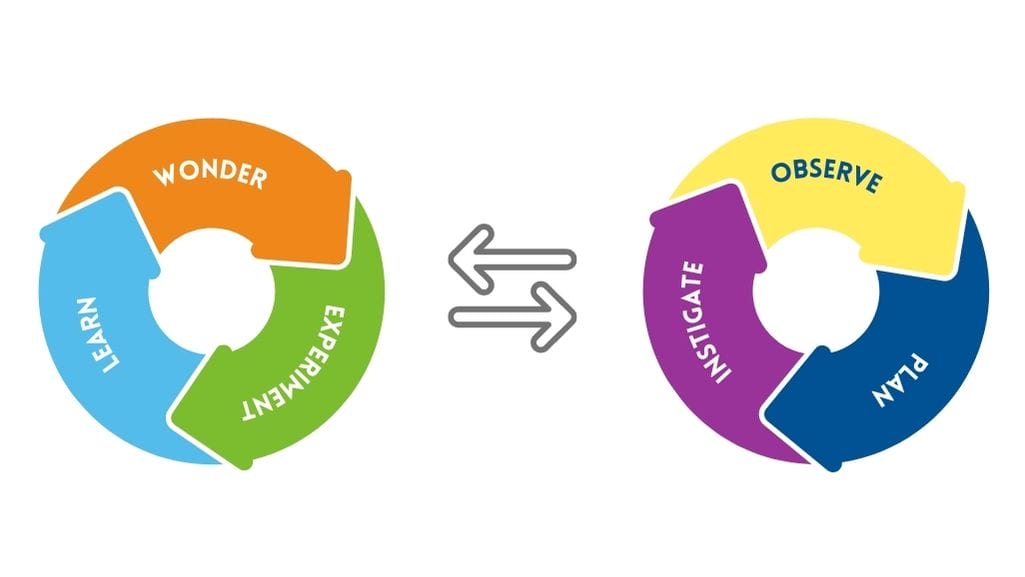July 26, 2021
By Aleta Margolis, Founder and President, Center for Inspired Teaching
Hooray for Monday is a weekly blog filled with questions, ideas, reflections, and actions we can all take to remodel the school experience for students.

Two weeks ago I wrote about changing the way we talk about the work we do as teachers, and changing the conversation from what we teach to who we teach. This shift is more than a semantic one – changing the way we talk about something can have a profound impact on the way we do it.
My post posed questions and offered strategies for getting to know students better, arguing that knowing our students is at least as important as knowing our subject matter, and that talking about who we teach is an important first step in making that change.
There are other places where changing our language can spark serious changes in our actions. The language we use about teaching can have a real influence on how teachers view ourselves and our work, and on how others view us too.

At Inspired Teaching we take language seriously, and choose our words with intention. Here are a few examples:
Let go of “Deliver.”
Teaching is often described as “delivering” instruction. We challenge the use of the word in an educational setting. Postal workers deliver mail to mailboxes. Mailboxes don’t have much of a role in the equation – they receive the mail, but otherwise, they’re pretty passive. Uber Eats drivers and DoorDashers deliver take-out food to hungry customers. Like the mailbox in the above example, we are the passive (though grateful!) recipients of the double cheeseburgers, Greek salads, and sweet & sour chicken. UPS and FedEx drivers deliver the designer sunglasses, sneakers, and yoga leggings we find on sale online, and the arrival of those items makes us happy (and fashionable!). Delivery is great for online shopping and pizza on demand; but it’s not so great for teaching and learning.
Children should be the subject of teaching, not the object. Challenge yourself to let go of the word “deliver” when you plan for, and engage in, teaching. Delivering is something you do to someone. Teaching is something you do with someone. Teachers: when you hear your inner voice about to say the words, “I’m preparing to deliver this lesson,” what might you say instead? School leaders: how might you change your inner and outer monologue away from, “I’ve got to deliver PD to my teachers next week,” and focus on engaging in professional learning with your teachers, instead of delivering learning to them? If we change our language to reflect learners’ active role in learning, we can alter our perspective on teaching, and our practice might change too.
Embrace Messiness; Eschew Sloppiness.
At Inspired Teaching, we embrace “messiness” in learning, but not “sloppiness.” Messiness is what happens during the Wonder-Experiment-Learn Cycle when students are generating new ideas or when teachers are recalibrating their plans in the moment to meet the needs of students. Messiness can be tangible, and look like scissors and scraps of paper, or magnifying glasses and seeds and soil spread around the classroom. Or it can be intangible, and look like a deviation from the lesson plan to incorporate an opportunity, challenge, or idea that presents a better way to achieve an instructional goal.
Messiness can exist alongside precision and intentionality, and is a welcome presence in an engagement-based classroom. Sloppiness, on the other hand, results from an absence of careful planning or thoughtful observation. It’s the result of carelessness and lack of investment in the planning process. Sloppiness interferes with the learning process, and can drain the momentum from a lesson. Messiness pushes learning forward, while sloppiness can stop learning in its tracks.
Be more than an information provider; be an Instigator of Thought.
Imagine if you started each day, and each lesson with the question, “How am I hoping to instigate thought in my students?” The question, “What content do I want them to learn?” remains important, but that question alone is inherently limiting. If I focus solely on the content I want students to learn, then it’s unlikely they will learn anything beyond that content. But if I ask myself how I can instigate, or provoke, thought, I’ll be more likely to encourage my students to wonder, to delve into the content. Consider: “The students need to know the meaning of ‘balance of power’ among the three branches of the US government,” compared with, “How might the balance of power among the three branches of government affect my students personally? What kinds of questions can I ask, or experiences can I create, to enable them to figure this out?”
When I strive to be an Instigator of Thought, I’m setting up my students – and myself – for an expansive learning experience. I’m removing the limits from what my students can learn, and from what I can learn as well.
Words matter. Changing the way we talk about teaching can change the way we approach our jobs as teachers. And that can make school a better place for students, and for teachers too.



















